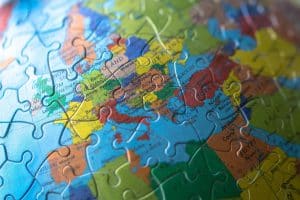Europe consumes resources at a rate far beyond what its ecosystems can regenerate, and the European Commission’s newly released Bioeconomy Strategy, expected to guide policy through 2030, does little to shift that trajectory.
The document maintains a strong focus on scaling bio-based industries, yet avoids committing to reductions in overall resource demand, a gap environmental groups argue undermines the EU’s climate and biodiversity goals.
The European Environmental Bureau (EEB), representing over 180 environmental organizations, warns that the Strategy reflects an outdated assumption: that biomass can simply substitute for fossil inputs without addressing systemic overconsumption. “Instead of setting a strategy that confronts Europe’s excessive demand for resources, the Commission clings to the illusion that we can simply replace our current consumption with bio-based inputs,” said Eva Bille, Head of Circular Economy at the EEB. The concern echoes longstanding evidence that the EU remains one of the world’s largest importers of embedded land, materials, and agricultural commodities.
Comparisons with an earlier leaked draft from October highlight what critics view as a weakening of the Strategy. The final version omits language on reducing ecosystem pressures, despite the EU’s demonstrable overshoot of planetary boundaries in areas such as land-system change, nitrogen flows, and biodiversity loss. This omission is particularly consequential given that Europe’s resource footprint already places significant strain on both internal and external ecosystems, with impacts extending through global supply chains.
While the Strategy proposes mapping available biomass, it avoids defining criteria for responsible use—or non-use—of this finite resource. Without clear methodologies, policymakers risk reinforcing existing competition between biomass applications. Material uses, such as in construction or durable goods, tend to deliver higher climate and resource efficiency than energy uses, yet the Strategy does not prioritize them. It also sidesteps the persistent issue of EU bioenergy subsidies, which have historically incentivized carbon-intensive and low-efficiency uses of wood biomass. Numerous scientific assessments have warned that such policies increase emissions in the short to medium term, strain forest carbon sinks, and distort wood markets.
The Commission further asserts that the EU is largely self-sufficient in biomass, a claim that fails to reflect the reality of Europe’s livestock-heavy agricultural model. More than 70% of feed for the EU’s animal farming sector is imported—an indication that current biomass use patterns are neither balanced nor sustainable. By leaving room for expanded biomass imports, the Strategy risks perpetuating reliance on global supply chains linked to deforestation, land degradation, and food-security pressures in exporting regions.
Despite market signals showing rising demand for ecologically sourced materials, the Strategy offers minimal support for sustainable land management practices such as closer-to-nature forestry, agroecology, and organic farming. These approaches are widely recognized for their capacity to enhance resilience, improve soil health, and support biodiversity—all critical components of a functioning bioeconomy.
Legislative proposals under the new Strategy are expected beginning in Q1 2026. For environmental groups, these will represent the first test of whether the Commission intends to correct what they see as fundamental gaps: setting clear priorities for biomass allocation, phasing out harmful subsidies, and aligning resource use with ecological limits rather than technology-led substitution alone.
Stay updated on the latest in energy! Follow us on LinkedIn, Facebook, and X for real-time news and insights. Don’t miss out on exclusive interviews and webinars—subscribe to our YouTube channel today! Join our community and be part of the conversation shaping the future of energy.

